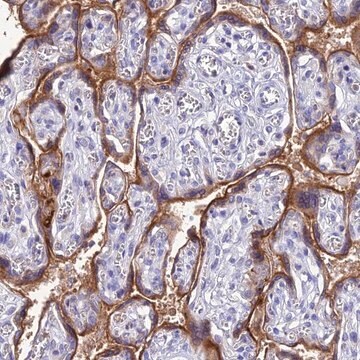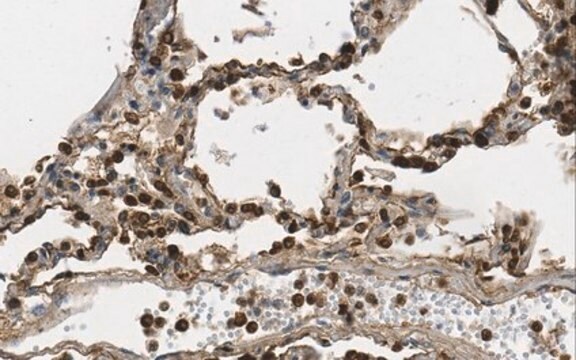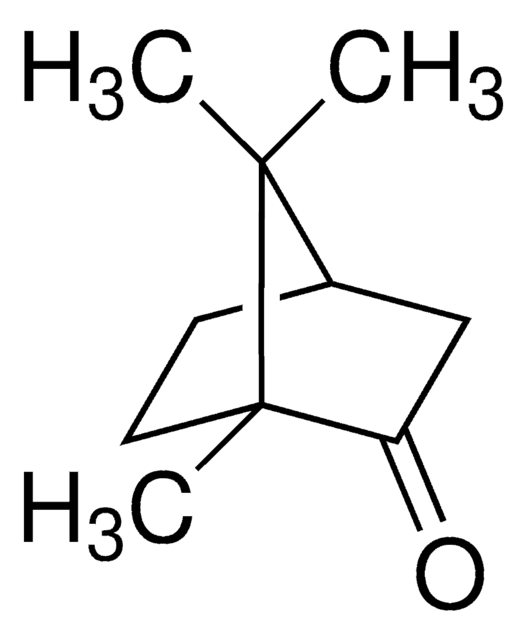MAB2148-C
Anti-PECAM-1 Antibody, clone P2B1 (Ascites Free)
clone P2B1, 1 mg/mL, from mouse
Synonym(s):
Platelet endothelial cell adhesion molecule, PECAM-1, EndoCAM, GPIIA′, PECA1, CD31
About This Item
Recommended Products
biological source
mouse
Quality Level
antibody form
purified antibody
antibody product type
primary antibodies
clone
P2B1, monoclonal
species reactivity
human
concentration
1 mg/mL
technique(s)
ELISA: suitable
flow cytometry: suitable
immunocytochemistry: suitable
immunofluorescence: suitable
immunohistochemistry: suitable
immunoprecipitation (IP): suitable
isotype
IgG1κ
NCBI accession no.
UniProt accession no.
shipped in
wet ice
target post-translational modification
unmodified
Gene Information
human ... PECAM1(5175)
Related Categories
General description
Immunogen
Application
Immunoprecipitation Analysis: A representative lot detected PECAM-1 by immunoprecipitation.
Immunohistochemistry Analysis: A representative lot from an independent laboratory detected PECAM-1 in astrocytoma tissue sections (Bronger, H., et al. (2005). Cancer Res. 65(24):11419-28.).
ELISA Analysis: A representative lot of from an independent laboratory detected PECAM-1 in a panel of CD31 mutant cell lines (Newton, J. P, et al. (1997) J. Biol. Chem., 272: 20555-63.).
Immunofluorescence Analysis: A representative lot from an independent laboratory detected PECAM-1 in astrocytoma tissue sections (Bronger, H., et al. (2005). Cancer Res. 65(24):11419-28.).
Cell Structure
ECM Proteins
Quality
Flow Cytometry Analysis: 1 µg of this antibody detected PECAM-1 in 1X10E6 human PBMCs.
Target description
Linkage
Physical form
Storage and Stability
Disclaimer
Not finding the right product?
Try our Product Selector Tool.
recommended
Storage Class Code
12 - Non Combustible Liquids
WGK
WGK 1
Flash Point(F)
Not applicable
Flash Point(C)
Not applicable
Certificates of Analysis (COA)
Search for Certificates of Analysis (COA) by entering the products Lot/Batch Number. Lot and Batch Numbers can be found on a product’s label following the words ‘Lot’ or ‘Batch’.
Already Own This Product?
Find documentation for the products that you have recently purchased in the Document Library.
Our team of scientists has experience in all areas of research including Life Science, Material Science, Chemical Synthesis, Chromatography, Analytical and many others.
Contact Technical Service







